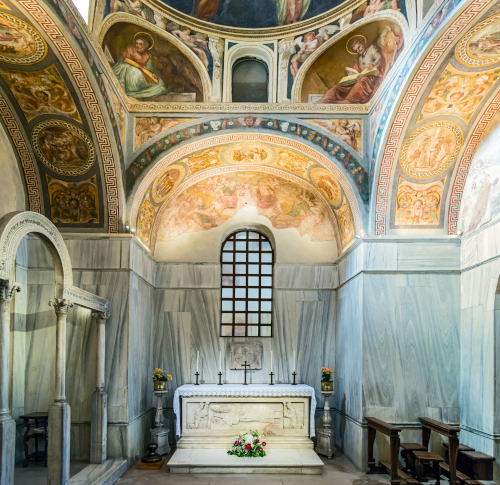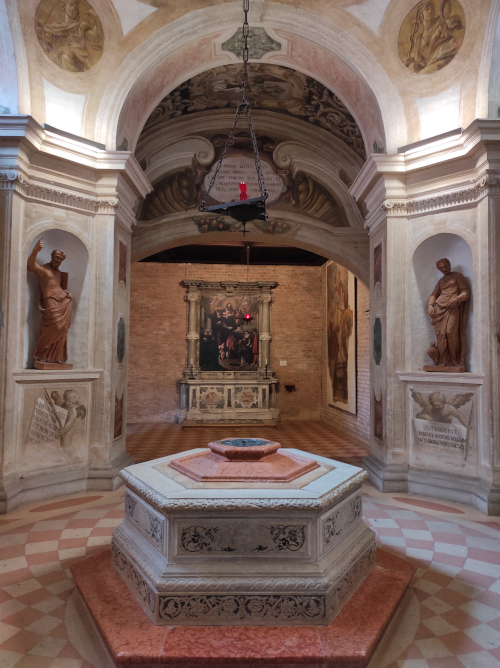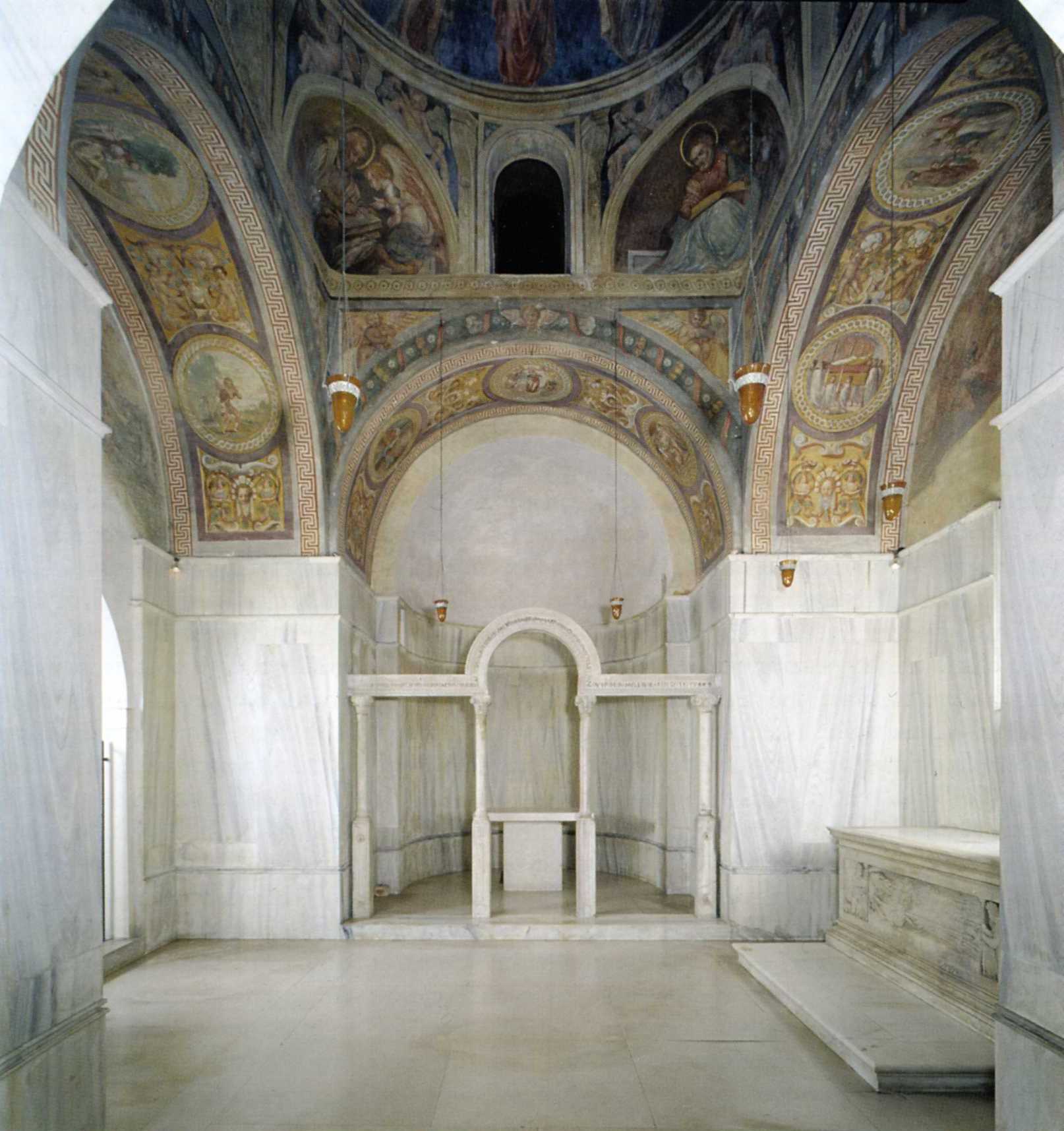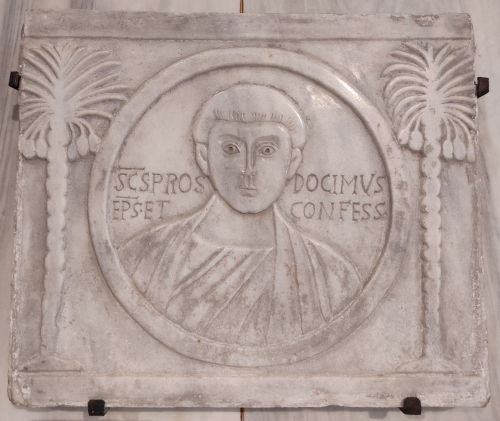ABBEY OF SANTA GIUSTINA
PADUA

Main view of the sacellum of St Prosdocimus
From the right transept of the basilica of Santa Giustina, one enters the so-called corridor of the martyrs, so called from the 16th-century hexagonal well, below which is another even older well from the 12th century, which according to legend contains the bones of the Paduan martyrs of the Diocletianic period (244-313). Crossing the corridor where there is the chest used to hold the body of St Luke, one passes through a small atrium to the sacellum (a term indicating a votive chapel for relics and saints), dedicated since the 6th century to St Prosdocimus, the first bishop of Padua, remembered for his evangelizing work and for his diligence in baptizing, so much so that he has always been represented with a jug of water in his hand.
The chapel is of modest dimensions (6.95m x 8.95m x 3.67m) and is in the Greek cross plan with three barrel vaulted arms, and an east-facing fourth arm featuring a semicircular apsidiole. The central part is surmounted by four pendentives on which rests a hemispherical dome.

The Corridor of the Martyrs
Its appearance today is the result of almost twenty years of reconstruction (from 1942 to 1960) aimed at restoring the features that were assumed to be the original ones. In fact, starting from 1564, at the behest of the abbot Angelo Faggi (1500-1593), who was also responsible for the building of the Corridor of the Martyrs, the chapel underwent invasive alterations that changed its orientation, but, above all, the decorative motifs, to follow Renaissance aesthetic canons. So it was that the ancient mosaic decoration of the floor was concealed by a simple cover, while the mosaics of the dome and the small barrel vaults were replaced by the frescoes by Camillo and Tommaso di Pellegrino of Chioggia and Cornelio Campagnola, while the stucco and Proconnesian marble cladding was lost lost forever (today the walls are covered with Lasa marble, apart from small e fragments).

The Pergula separating the sacred area
At the end of the apse, stands the pergula in Proconnesian marble, an original work of the 6th century, which still serves to separate the sacred area from the rest of the chapel. It consists of a raised arch between two architraves, supported by slender columns supported by narrow pillars.
The saint's body is preserved inside the sarcophagus, which also dates back to 1564. For this reason, on the wall there is a 6th-century marble panel in which two palmettes frame a clypeus with the effigy of St Prosdocimus depicted as a young Roman aristocrat.

The clipeus with the effigy of St Prosdocimus
The Greek cross plan of the chapel of San Prosdocimo is identical both to that of the chapel of the basilica of San Felice e Fortunato in Vicenza, dedicated to Mary Mater Domini, and to that of the Baptistery of San Giovanni of the basilica of Santa Tecla in Este. But even outside the Veneto there are others similar both in Ravenna and Rimini. This is because in the upper Adriatic area this plan enjoyed great popularity during the 6th century.